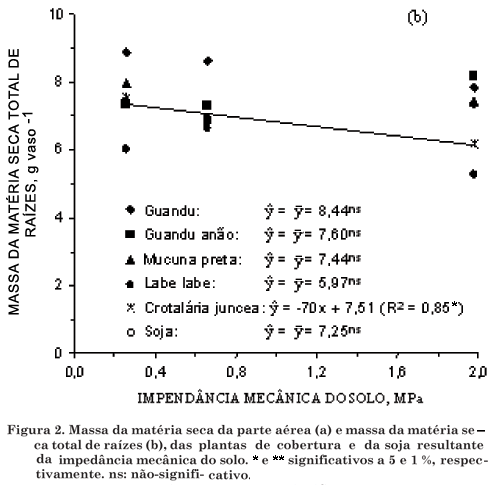The cultivation of cover crops with vigorous root systems in crop rotation can improve the physical quality of compacted soils. The objective of this study was to evaluate shoot and root growth of soybean (Glycine max) and five species used as summer cover crops (Cajanus cajan, Cajanus cajan var. small, Mucuna aterrima, Dolichos lab lab and Crotalaria juncea) in a soil submitted to three different levels of subsurface compaction. Plants were grown in pots assembled with three PVC rings, 50 cm high and with 20 cm internal diameter, filled with a clay-textured Red Nitosol. The soil layer at 20-30 cm depth was compacted to a bulk density of 1.13, 1.34 and 1.56 g cm-3 with 0.26, 0.66 and 1.98 MPa mechanical impedances, respectively. Sixty days after plant emergence, plants were harvested and it was determined the shoot and root dry matter, root length density, and root mean diameter. In spite of altering the root system distribution along the soil profile, the subsoil physical impediment did not reduce the total root dry matter of soybean and cover crops, except for Crotalaria juncea. Mucuna aterrima was the most tolerant and soybean the most sensitive of the leguminous species to soil compaction. Crotalaria juncea roots showed a potential of forming "biopores" comparable to those of Mucuna aterrima, in spite of being relatively more sensitive to soil compaction. Mean root diameter of soybean and Crotalaria juncea showed significant correlation to root growth in the compacted soil layer.
green manures; roots; crop rotation; soil bulk density; Glycine max








